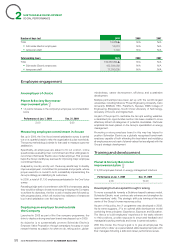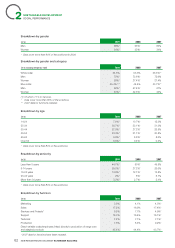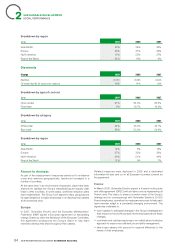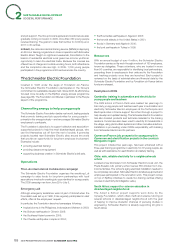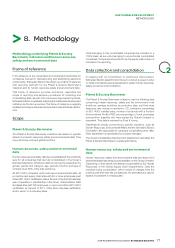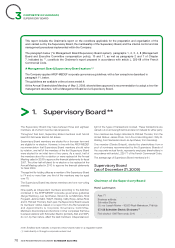APC 2009 Annual Report Download - page 68
Download and view the complete annual report
Please find page 68 of the 2009 APC annual report below. You can navigate through the pages in the report by either clicking on the pages listed below, or by using the keyword search tool below to find specific information within the annual report.
2009 REGISTRATION DOCUMENT SCHNEIDER ELECTRIC66
SUSTAINABLE DEVELOPMENT
2SOCIETAL PERFORMANCE
This approach also refl ects Schneider Electric’s commitment to
promoting human rights in accordance with the Global Compact’s
Principle 1 (Businesses should support and respect the protection of
internationally proclaimed human rights) and Principle 2 (Businesses
should make sure that they are not complicit in human rights abuses).
In 2009, Schneider Electric made 80% of its purchases from 2,300
suppliers and sub-contractors. Total purchasing volume came to
approximately euro 8billion during the year.
Monitoring working conditions among sub-
contractors and suppliers
Schneider Electric uses a certifi cation process called Schneider
Supplier Quality Management to select new suppliers. The process
is based on a questionnaire comprising nine sections, one of which
concerns the environment and sustainable development. The Group
evaluates suppliers’ performance in the areas of labour relations,
social accountability (SA8000), environmental protection (ISO 14001),
compliance with the Restriction of Hazardous Substances (RoHS)
directive and support for the Global Compact. In 2009, 317 new
suppliers were evaluated, 125 of them in emerging economies (Asia,
India, South America and Eastern Europe).
Improving working conditions among
sub-contractors and suppliers
Commitment to the Global Compact is one of the criteria to be
part of major suppliers of Schneider Electric. At the end of 2009,
33.1% ▲ of Schneider Electric purchases with vendors listed have
been made with the signatories of the Global Compact or equivalent.
Suppliers listed represent 70% of total purchases, or 5.6 billion euros
in 2009.
Integrating new acquisitions over the period 2007/2009, a panel of
947 key partners is established for the Group. A statement on the
importance of joining the Global Compact, a public commitment to the
United Nations, is made by the pilot purchase. In late 2009, 36.54% of
these 947 partners have signed the Global Compact or EICC.
Assessing suppliers
In 2009, the Group decided to go a step further by implementing
a process to assess the sustainable development performance of
a selected number of suppliers. The assessment was conducted
on the basis of an external scorecard fully aligned with the Global
Compact.
This is an important sign, both internally and with suppliers. Following
the initial testing period, the process and assessment scorecard will
be made broadly available and deployed among selected suppliers.
Another advantage of an external process is that it is a simple
solution and a fi rst step towards the creation of a supplier database
that can be shared with other companies.
>
6. Societal performance
In today’s world, 1.6billion people*, or around 300million households,
do not have access to electricity. Of these, 550million live in
sub-Saharan Africa, 500million in India, 100million in Indonesia,
100million in Bangladesh and 70million in Nigeria.
Roughly speaking, these underprivileged individuals live on less than
USD2 a day, while their families’ energy bill can run over USD15 a
month.
Access to energy not only improves quality of life, but also facilitates
access to healthcare, education and development for those who
need it the most.
Through its energy access programme and Foundation, Schneider
Electric wants to play a major role in helping people at the bottom
of the pyramid gain access to electricity.
The BipBop energy access programme
Through its investments in disadvantaged communities or
stakeholders, the Group is focusing on three specifi c areas:
• business - Create an investment fund to develop electrical
businesses;
•innovation - Build and deliver electrical distribution solutions for
people at the bottom of the pyramid;
•people - Help provide electrical training for young people looking
to enter the workforce. The Schneider Electric Foundation and
Schneider Electric’s team members support this focus through
their collective and individual commitment.
The BipBop (Business, Innovation , People at the Base of the
Pyramid) in-house energy access programme illustrates Schneider
Electric’s desire to create a virtuous circle combining business,
innovation and social responsibility.
* Source: international Energy Agency – 2006.
▲ 2009 audited indicators


